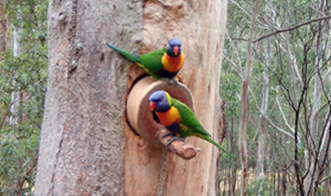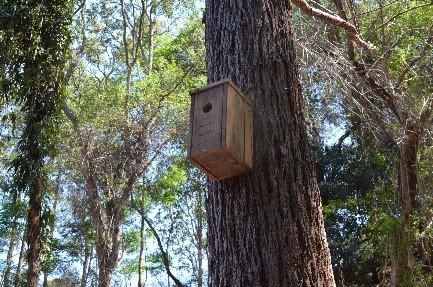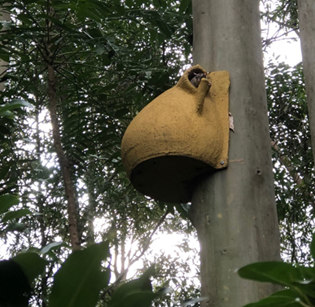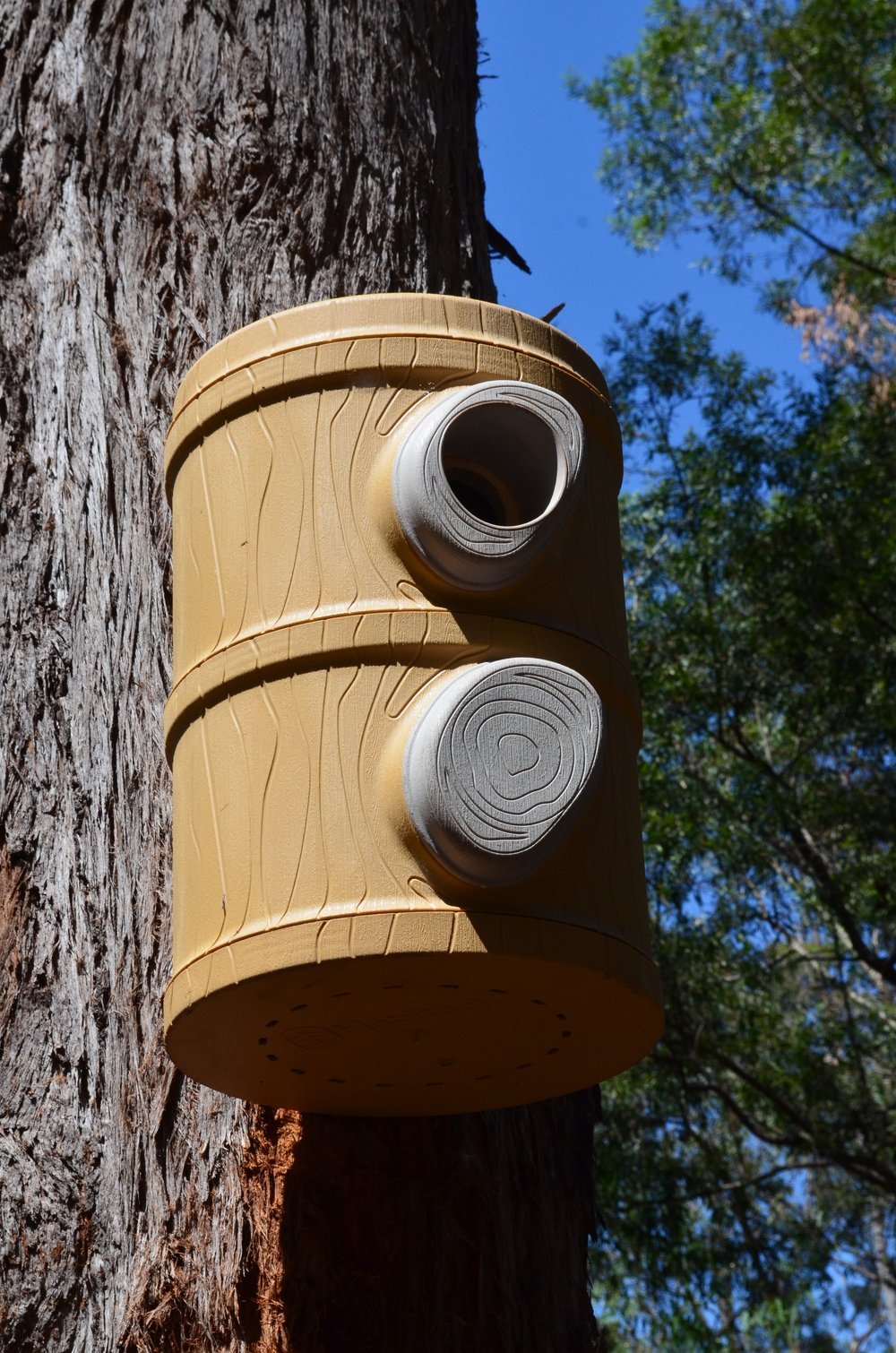Artificial Hollows
Owlet Nightjar Photographer Eliza Scott
DID YOU KNOW…..
Some 15% of all Australian vertebrates – mammals, birds, amphibians, and reptiles, rely on tree hollows for some part of their lifecycle! Hollows provide shelter, protection, and a place to have and raise young. Without them, these species would most probably not survive.
Housing Crisis
Natural hollows have become increasingly scarce over the last two and a half centuries of European settlement. Land clearing for agriculture, housing, industry and infrastructure has destroyed vast tracts of native forest. In particular, old-growth forest has been severely impacted, and this is a critical threat to our native hollow-dwelling fauna; why so? Many trees, especially large eucalypt species, can take over a hundred years to form useable hollows! Although the past few decades have seen some recovery of forests (although many are still being felled), the trees planted will take at least another half-century before they are of use to hollow-dependent species. This shortage of old, hollow-bearing trees has led to a housing crisis on a huge scale!
What Can Be Done?
The obvious answer is to stop felling old-growth trees. Natural hollows are still the ideal habitat for native species. Many old, and even dead, trees are like a block of apartments for wildlife. They have hollows of different sizes, shapes, aspects and locations that occur naturally, and one tree may provide homes for tens, or even more, of individual animals. Preserving these in the landscape is critical. Even if a dead tree falls down (or is removed for human safety reasons), it can still provide important habitat for goannas, echidnas, and many other species.
Of course, even if we stop felling old-growth forests, there is still a huge gap between the number of animals that need a hollow, and those that are actually available. This is where Artificial Hollows can make a difference.
What is an Artificial Hollow?
Artificial hollows take many forms. These include traditional timber nest boxes, 3D printed boxes that mimic natural hollows, modular injection-moulded designs, and HollowHog hollows cut directly into trees by arborists using bespoke equipment. There are other methods in use too, including earth banks constructed with small hollows for species such as pardalotes, and re-using natural hollows from fallen trees. All of these aim to mimic hollows found in nature and therefore attract the fauna that depend on them.
The use of Artificial Hollows in habitat that, aside from the absence of natural hollows, has been found to increase carrying capacity for many species. Installing artificial hollows on your property can greatly benefit native wildlife, so what are you waiting for?!




Resources - Here are some links to get you started!
Life in Hollows (short video) Life In Hollows 25 10 2023 - YouTube
Build Your Own Nest Box Build your own Wildlife Nest Box: A guide for Western Sydney (squarespace.com)
Nest Boxes and Artificial (monitoring) Guidelines NCRLN-CSU-Nest-Box-Guidelines.pdf (northcoastlandcare.org.au)
NestBox Tales FaceBook Group (6) NestBoxTales | Facebook


